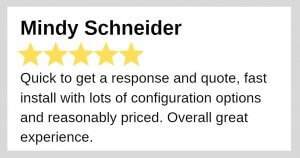Fire sprinkler systems are among the most beneficial tools in your fire suppression system. Today's systems have been shown to decrease deaths and property loss by more than 65 percent. For this reason, fire sprinkler systems are definitely something you require in your property. But how do fire sprinkler systems work? We answer how commercial fire sprinklers protect your company from imminent danger.
Fire Sprinklers Detect Heat
Contrary to popular belief, fire sprinklers will not be triggered by smoke alone. It is an easy mistake to make since heat is carried upward with smoke from a fire. But if smoke was the trigger, merely burning a toast in the office kitchen could be sufficient to drench the kitchen with water from a fire sprinkler head.
Fire sprinklers activate because high heat sets the sprinkler system. When a fire ignites, the air directly above it heats quickly. This hot air rises and spreads along with the ceiling. When the air is hot enough and touches a sprinkler head, it sets a chain reaction.
A lot of sprinkler heads contain a small glass bulb with colored liquid inside. This bulb seals the sprinkler head and prevents water from flowing out. When the liquid heats, it expands and bursts the glass, opening the pipe and allowing water to flow out.
The color of the liquid in the bulb indicates the temperature required to activate the sprinkler. Different colors are appropriate for a wide variety of settings, from ordinary residential and light commercial buildings to industrial facilities where the ceiling temperature can rise quite high during normal operations. The temperature ratings for different colored bulbs include:
- Orange: 135 degrees F
- Red: 155 degrees F
- Yellow: 174 degrees F
- Green: 200 degrees F
- Blue: 286 degrees F
- Purple: 360 degrees F
- Black: 4400 degrees F
Fire Sprinkler Systems Douse the Fire
Each sprinkler head is connected to a pipe that attaches to a secure water source outside the building. When heat initiates a sprinkler head, a valve opens, enabling pressurized water from the pipe system to flow out and extinguish the flames.
It is necessary for water in fire sprinkler systems to be pressurized. This enables the water to spray outward in an arc to completely douse the fire and restrict it from reigniting.
Fire Sprinklers Minimize Water Damage
In movies, fire sprinkler systems work misleadingly, making a lot of people believe the common misconception that all the sprinklers in an order are tied together. When one is activated by heat, they are all triggered and spray out water at the same time.
If this is the case, putting out a fire would merely be choosing fire damage for water damage, and it is not how fire sprinklers work.
Luckily, sprinkler heads work independently. Most of the time, fires can be extinguished uniquely after just one or two sprinklers initiate. This enables water damage to be confined to the small area where the fire started. Plus, since fire sprinklers douse flames with about six times less water than a regular fire hose, their quick action is much less damaging to your establishment or property than a visit from the fire department.
What Else Do You Want in Fire Sprinkler Systems?
Aside from the automatic sprinklers themselves, there is the system of pipes in the ceiling, inquiry or test valves, and a drain connection. There is also a fire department connection—a regulated connector to which the fire department can connect hoses and pump extra water into the fire sprinkler systems if needed, typically located in a very convenient position outside of the building or in a nearby parking lot.




